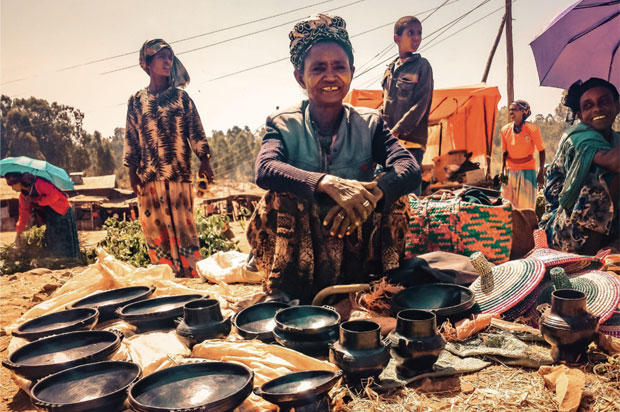In what way has history played a part in your life?
I have this kind of weird theory that if it is true that your soul survives and you can in fact be reincarnated, then I’ve become aware that I have a sense of connection to future lives. I believe that some of the lessons and challenges I’m experiencing today have happened and been solved in the future. And then my purpose is to learn this lesson in order to move on. While I respect history, I have a respect for the future as well, as though I’m from the future in some weird way.

People, including me, are very comforted by the past: it’s over, you can reflect on it, learn from it, but you can’t change it. If you think about design and style: people are comforted by references to the past, like capitals on a column that don’t need to be there. While they’re just ornaments, they’re also connections to the past. A lot of people surround themselves with stuff referencing the past, but I find that clutters my head. I’m much more prone to just a white box devoid of ornament where people become the story.
I appreciate older buildings but then again, somebody gets to decide what becomes a landmark and what doesn’t. If everything becomes a landmark, we’d still be living in caves! There are times we should say that was a fantastic building for the time it was built, as if the building’s past is a gift to the future that will replace it. Now let’s create the next; let’s create future history. Think about the Presidential impeachment hearings being conducted in historic environments with wood and leather. How are people supposed to think about the future when they’re stuck in what looks like an 18th century British colonial environment?
What relevance does history have in the domain of innovation strategy?
History is to be revered, remembered and used but as someone said, “History doesn’t repeat itself but the future rhymes with the past.” This gets into our philosophy of Design Thinking where one of the fundamentals is to be human-centered. It’s focused on human needs and not wants, and the essence of that is that human need doesn’t actually change that fast.
What history, the present and the future have in common are humans, and human needs won’t change.
The needs of someone in the year 2060, 40 years from now are not going to be that different from their needs of today and aren’t that different from needs from 2,000 years ago. I don’t see time as this layering of yesterday, the day before yesterday, last month and so on. These things are connected in indescribable ways, but also, nobody knows what time actually is. It’s a complete construct of humans, as someone once said, “We made up time, so everything doesn’t happen all at once”.
What role do you think the past can play in creating the future?
Clearly the danger is to just assume that there are lessons to be learned. To accept that something that succeeded or failed in the past will always succeed and fail in the present or the future. I think that’s a real danger because there are a lot of things that failed which may have failed for some unforeseen reason, and with a different way of looking might actually be a clue to the future.
When you think about the iPod, one of its fundamental value propositions was that you could buy a song one at a time. Well, that was true in 1950s and ’60s — when you could buy one record with one song and you got the other side for free. It was then determined that we need to sell more and so albums came out with 10-15 songs. Fast forward to Apple’s iPod, which went back in history to say the real human need is, “I like that song”, and “I don’t want to buy 12 other songs just to get that one.” It’s a classic case of how the past can inform the future in different forms, all focused on the underlying human need.
In fact, ride sharing, crowdsourcing, and things like Uber and Airbnb were models that existed 30, 40, even 50 years ago. The entire insurance industry is based on farmers from a surrounding area creating their own shared risk pool of money to help any one of them in need. These models are not new. I don’t think there’s anything new; things are just repackaged and narrated in different ways.
What are some of the other examples of old models?
The further we go into the future, the more we’ll realise things are rooted in the past but not dependent on them. I don’t like to think about it from a time perspective but if you go back and look at every major innovation in the past 10-20 years — social media, for example — that level of connectivity to friends and family is just a reenactment of the way it used to be!
Think about Google, eBay and Amazon: I don’t think of them as futuristic innovations. eBay is just the digital reenactment of the village market where people traded things they didn’t need anymore.
Given the population increase of older people globally, we will probably see a return to the kind of communal living that existed a hundred years ago. These preferences are baked into our DNA; as a species, we’re tribal. Marketers will make it sound like it’s cheaper to live that way but it’s not about the cost; it’s about human interaction. That’s another old model that will come to fruition.
So what’s changed? Just the platforms hosting them?
Yes. People turn them into platforms because they’re good business models. The fundamental reality of Google is that because it became a perfect place to search — it was so fast and reliable, and you can find out about anything — it became such a powerful platform. What it really is, is the largest advertising firm in the world, dwarfing any other advertising agency by a lot.
Because of how convenient and powerful the tool is, we’re willing to live with the collateral damage. The two are in great synergy because the more you search, the more they know about you, and the more they can deliver ads relative to you. I think this defines what a platform is. I don’t know if it’s actually business model innovation as much as platform innovation.
Another interesting fact about the most significant innovations of the recent past is that they didn’t rely on any new technology. Maybe the Cloud is perceived as a new technology but really, it’s just a bunch of servers sitting in a warehouse.
I think the only place where technology is actually making a significant impact in terms of the future is medicine and material science. Deeper understanding of genetics and heart disease, how the body and brain work, are going to transform us.
The same with material science: we’re still constructing buildings out of trees and dirt — that’s what wood and concrete are!
If we say the future is some version or rhyme of the past, then what is the role of a designer or strategist? What is the higher purpose?
It is to see the underlying values, principles and needs in order to expose the opportunities. But it’s not about seeing something new — it’s about seeing something existing. It doesn’t have to connect to the past; it is simply building a deeper understanding as opposed to applying something based on perception. The difference between strategy and design is that design is an application while strategy is an understanding. When you put the two together, it can be very powerful.
The world of innovation strategy is relatively new in terms of Industry. What would you consider its heritage today and in the future?
If you go back in history, the word ‘innovation’ wasn’t around; it was more ‘invention’. These inventors were the renegades, oddballs, misfits, risk takers.
Thomas Edison was exploring out in the wilderness for new materials; it was all based on risk-taking and curiosity. He wasn’t motivated by money. In today’s world, entrepreneurs use other people’s money to take risks and then money-making becomes the object of the exercise.
If the driving force behind innovation changed from curiosity and risk to money, then the future is going to be about value and impact. Entrepreneurs will think, “How many lives can I save, or how many years can I add to the planet’s life?”. We’re going to measure the entrepreneurs and innovators of the future not by economic wealth but their cultural impact. I know, because I’m from the future!



Comments (0)